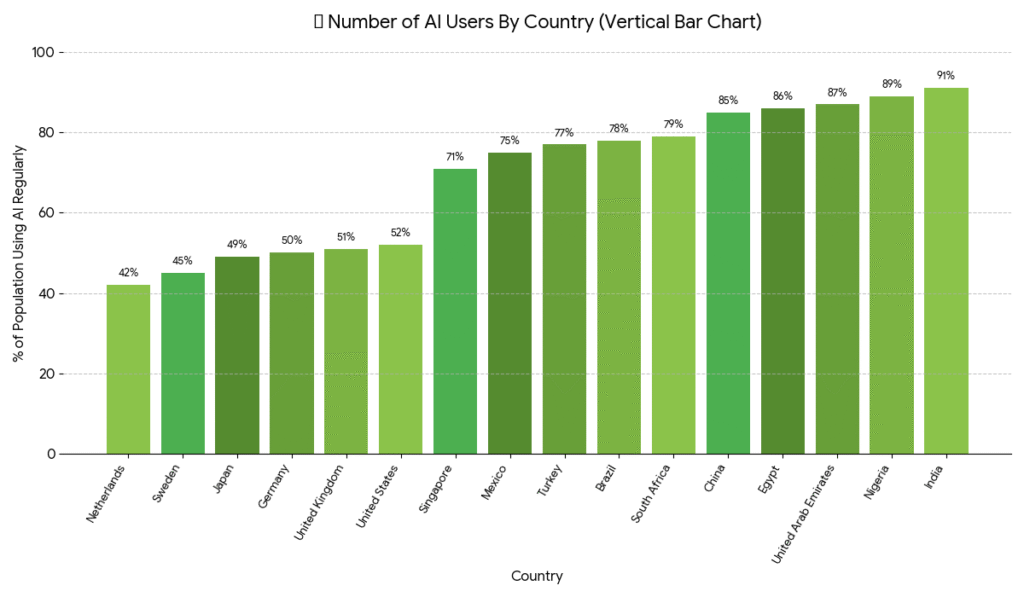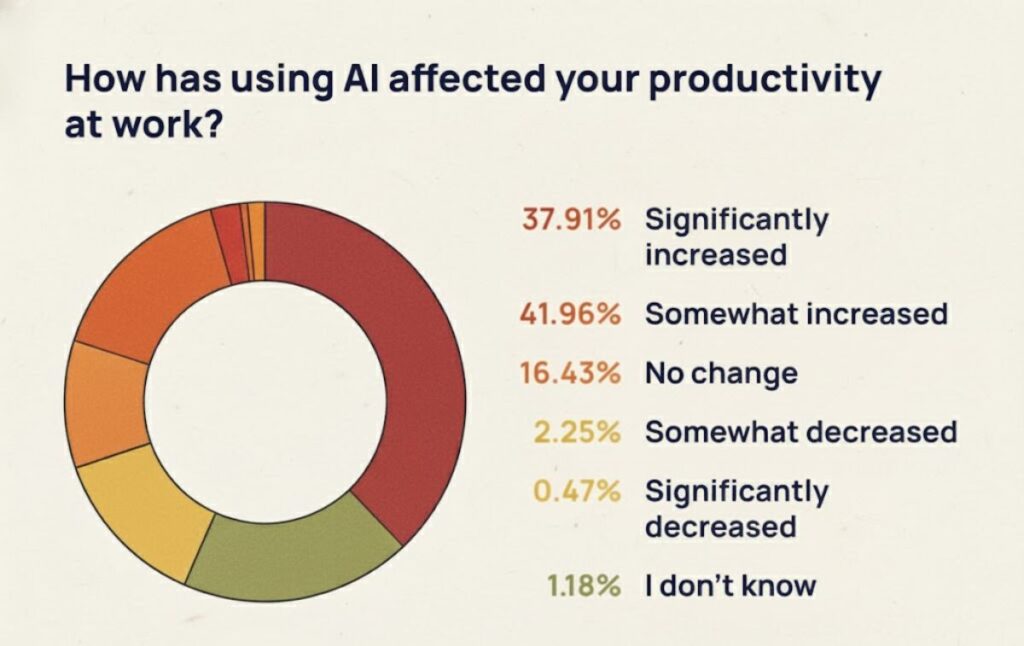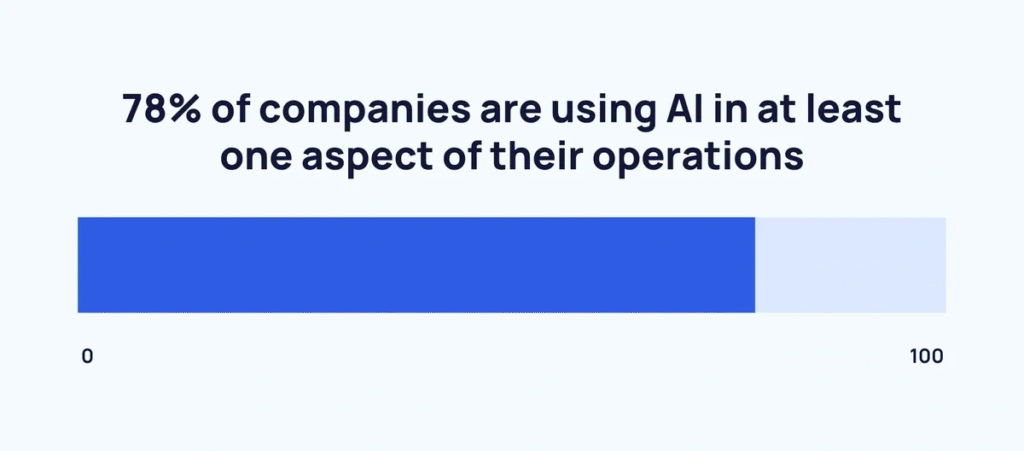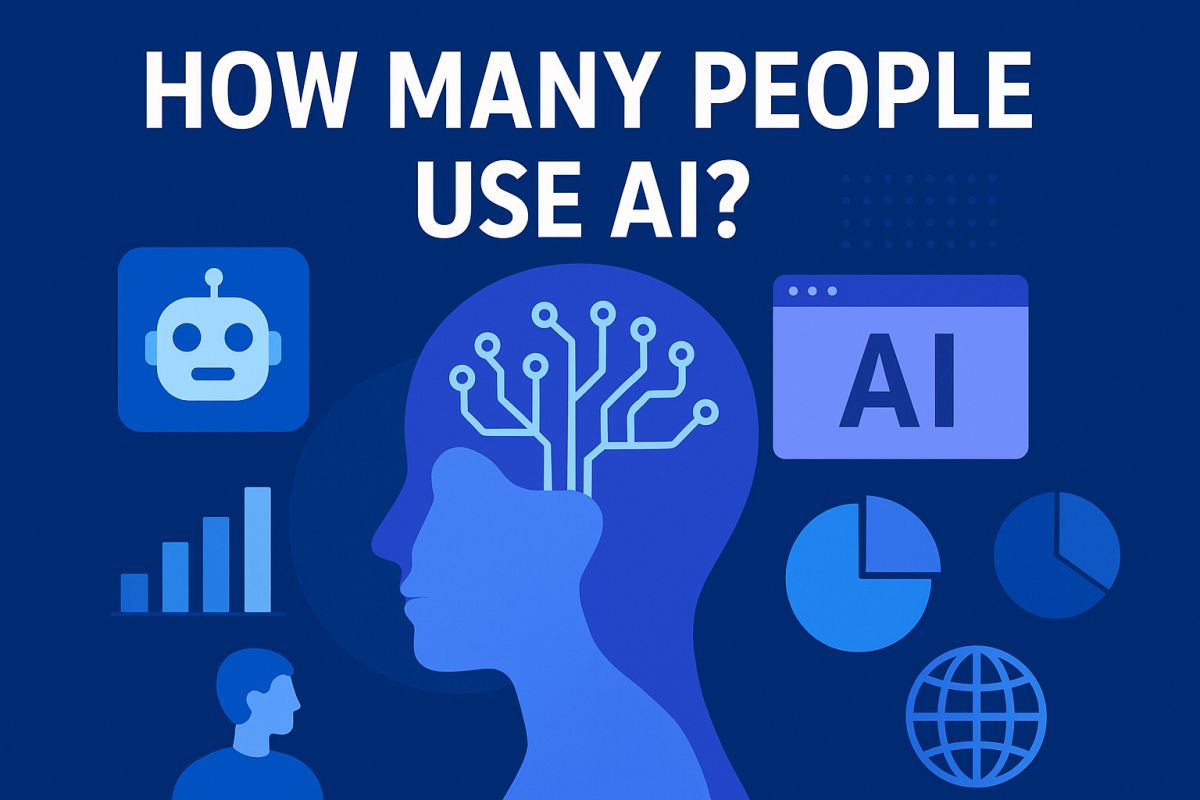Artificial Intelligence (AI) has rapidly evolved from a futuristic concept into a daily necessity. In 2025, it’s no longer just powering smart assistants or chatbots — AI has become an integral part of how people learn, create, work, and communicate.
From mobile users interacting with voice assistants to professionals streamlining workflows using generative tools, AI is everywhere. But how many people actually use AI in 2025? Let’s dive into the global numbers, adoption trends, and demographic patterns shaping the AI revolution.
Global AI Usage in 2025
Recent data shows that AI usage has skyrocketed. Nearly 1.8 billion people worldwide have used AI tools at least once, and over 550 million interact with AI on a daily basis.
That means around two-thirds (66%) of the global internet population now uses AI regularly — an astonishing leap from just 20% a few years ago.
Most Popular AI
| Rank | AI Tool | Total Users (2025) |
| 1 | ChatGPT (OpenAI) | 2.8B monthly active users |
| 2 | Google AI Overviews | 2B monthly active users |
| 3 | Meta AI | 1B monthly active users |
| 4 | Google Gemini | 450M monthly active users |
| 5 | Canva | 220M monthly active users |
| 6 | Google AI Mode | 100M monthly active users |
| 7 | QuillBot | 50M monthly active users |
| 8 | Microsoft Copilot | 30M monthly active users |
| 9 | Perplexity | 22M monthly active users |
| 10 | Claude (Anthropic) | 20M monthly active users |
Sources: CNBC, Menlo Ventures, TechCrunch,
Table 1: Global AI Usage Overview (2025)
| Category | Estimated Users (2025) | Share of Global Internet Users |
|---|---|---|
| Total people who have tried AI | 1.8 billion | 66% |
| Daily active AI users | 550 million | 20% |
| Monthly or occasional users | 1.25 billion | 46% |
| People unaware they use AI | 480 million | 18% |
| Businesses using AI tools | 78% of global firms | — |
AI Usage by Frequency
While almost everyone has encountered AI, the intensity of use varies. Many individuals use AI occasionally for assistance, but a large share now integrates it into daily routines — from work productivity and creative design to personal assistance.
Table 2: Frequency of AI Usage (2025)
| Frequency of Use | Percentage of AI Users | Estimated Global Users |
|---|---|---|
| Daily users | 19% | 550 million |
| Weekly users | 24% | 700 million |
| Monthly users | 23% | 670 million |
| Rare or first-time | 34% | 950 million |
This shows that nearly half of all AI users engage weekly or more frequently — a clear signal that AI has become habitual.
AI Usage by Demographic Group

AI adoption patterns vary significantly by age, income, and background, but the gap is closing fast.
Table 3: AI Adoption by Age Group (2025)
| Age Group | Use Often | Use Sometimes | Rarely/Never Use |
|---|---|---|---|
| Gen Z (18–28) | 19% | 35% | 18% |
| Millennials (29–44) | 16% | 38% | 21% |
| Gen X (45–60) | 8% | 30% | 40% |
| Boomers (60+) | 2% | 15% | 53% |
Younger generations clearly lead AI adoption, viewing AI not as futuristic tech but as an everyday utility — from school assignments to career tools.
Table 4: AI Usage by Income Level
| Annual Income (USD) | Regular AI Users | Occasional Users |
|---|---|---|
| $100,000+ | 74% | 18% |
| $50,000–$100,000 | 58% | 27% |
| Under $50,000 | 41% | 31% |
Higher-income households tend to use AI more regularly, often due to better access to high-speed internet and premium digital tools. However, low-income groups are rapidly catching up thanks to mobile-based AI services and free-to-use apps.
Table 5: AI Usage by Gender

| Gender | Regular AI Users | Occasional Users | Rarely/Never |
|---|---|---|---|
| Male | 69% | 22% | 9% |
| Female | 62% | 28% | 10% |
While men slightly outpace women in AI adoption, the difference is narrowing as accessibility improves and more women engage in digital professions.
Table 6: AI Usage by Ethnicity (U.S. Context)
| Group | Regular Users | Occasional Users | Rarely/Never |
|---|---|---|---|
| Asian Americans | 71% | 21% | 8% |
| Black Americans | 68% | 22% | 10% |
| Hispanic/Latino | 65% | 25% | 10% |
| White Americans | 54% | 30% | 16% |
These figures highlight an encouraging trend — diverse communities are increasingly embracing AI-driven tools for creativity, business, and learning.
AI Adoption by Region
The AI boom isn’t limited to one region. In fact, emerging markets have outpaced some developed countries in daily AI usage.
Table 7: AI Usage by Country/Region

| Country/Region | Regular AI Users (%) |
|---|---|
| India | 92% |
| Nigeria | 91% |
| UAE | 91% |
| Egypt | 90% |
| China | 89% |
| United States | 53% |
| Germany | 49% |
| Netherlands | 46% |
| Sweden | 45% |
Emerging economies show higher adoption rates, driven by mobile-first connectivity, affordable AI apps, and a young, tech-savvy population.
AI in the Workplace

Businesses are equally embracing AI. Across industries — from healthcare and education to finance and logistics — companies are deploying AI to enhance productivity, reduce costs, and improve decision-making.
Table 8: Corporate AI Adoption (2025)

| Business Sector | Share of Companies Using AI |
|---|---|
| IT & Software | 91% |
| Finance & Banking | 85% |
| Marketing & Advertising | 79% |
| Manufacturing & Supply | 72% |
| Education & Research | 67% |
| Healthcare & Pharma | 63% |
Nearly four out of five organizations have implemented at least one AI-driven solution — a clear indicator that the technology is no longer experimental but operational.
Most Popular AI Tools in 2025
Consumers engage with a variety of AI applications daily, consciously or otherwise.
Top AI categories include:
- Chat and writing assistants: for communication, content, and brainstorming.
- Image and video generators: used by creators and marketers.
- Voice assistants: embedded in mobile devices and homes.
- AI-powered productivity tools: for spreadsheets, emails, and project management.
- Smart recommendations: powering shopping, entertainment, and learning platforms.
AI has quietly integrated into nearly every app and service — even when users don’t realize it.
Why AI Adoption Is Growing Rapidly
AI’s rise in 2025 is fueled by five powerful drivers:
- Accessibility: Free or low-cost AI tools make advanced technology available to everyone.
- Generative AI Breakthroughs: Chatbots and image generators have brought AI into the mainstream.
- Productivity Needs: Businesses and individuals rely on AI to save time and enhance creativity.
- Mobile Penetration: Widespread smartphone use makes AI accessible to billions.
- Embedded AI: Everyday apps now include AI features by default — no learning curve required.
Together, these factors have transformed AI from a luxury to a necessity.
Future of AI Usage (2026–2030 Forecast)
Analysts predict that AI adoption will continue its explosive growth in the coming years:
| Year | Global AI Users (Est.) | Share of Global Population |
|---|---|---|
| 2025 | 1.8 billion | 66% |
| 2026 | 2.2 billion | 72% |
| 2027 | 2.7 billion | 78% |
| 2028 | 3.1 billion | 82% |
| 2030 | 3.7 billion | 85% |
By 2030, AI is expected to be as common as the internet itself, woven into every digital and professional experience.
Challenges of Rapid AI Adoption
While growth is exciting, it brings new challenges:
- Skill Gaps: Not everyone knows how to use AI effectively.
- Ethical Concerns: Privacy, fairness, and bias need regulation.
- Job Transformation: Some roles will evolve or disappear as automation spreads.
- Misinformation Risks: Deepfakes and false data can mislead users.
- Regulatory Needs: Governments are still catching up with AI laws and standards.
Addressing these issues will be key to ensuring AI benefits everyone equitably.
Key Takeaways
- Two-thirds of the world’s internet users now use AI in some form.
- Over 550 million people interact with AI daily.
- Emerging markets are leading adoption, with rates above 90%.
- 78% of global companies have deployed AI systems.
- Younger generations and high-income groups are the most active users.
- The global AI population could surpass 3.5 billion users by 2030.
Conclusion
Artificial Intelligence has crossed the threshold from innovation to integration. In 2025, it’s not about if you use AI — it’s about how often.
Whether writing, working, or simply scrolling, AI is shaping human experience in real time. It’s empowering individuals, transforming industries, and redefining creativity itself.
The future of AI isn’t just about smarter machines — it’s about a smarter, more connected world where humans and technology evolve together.

